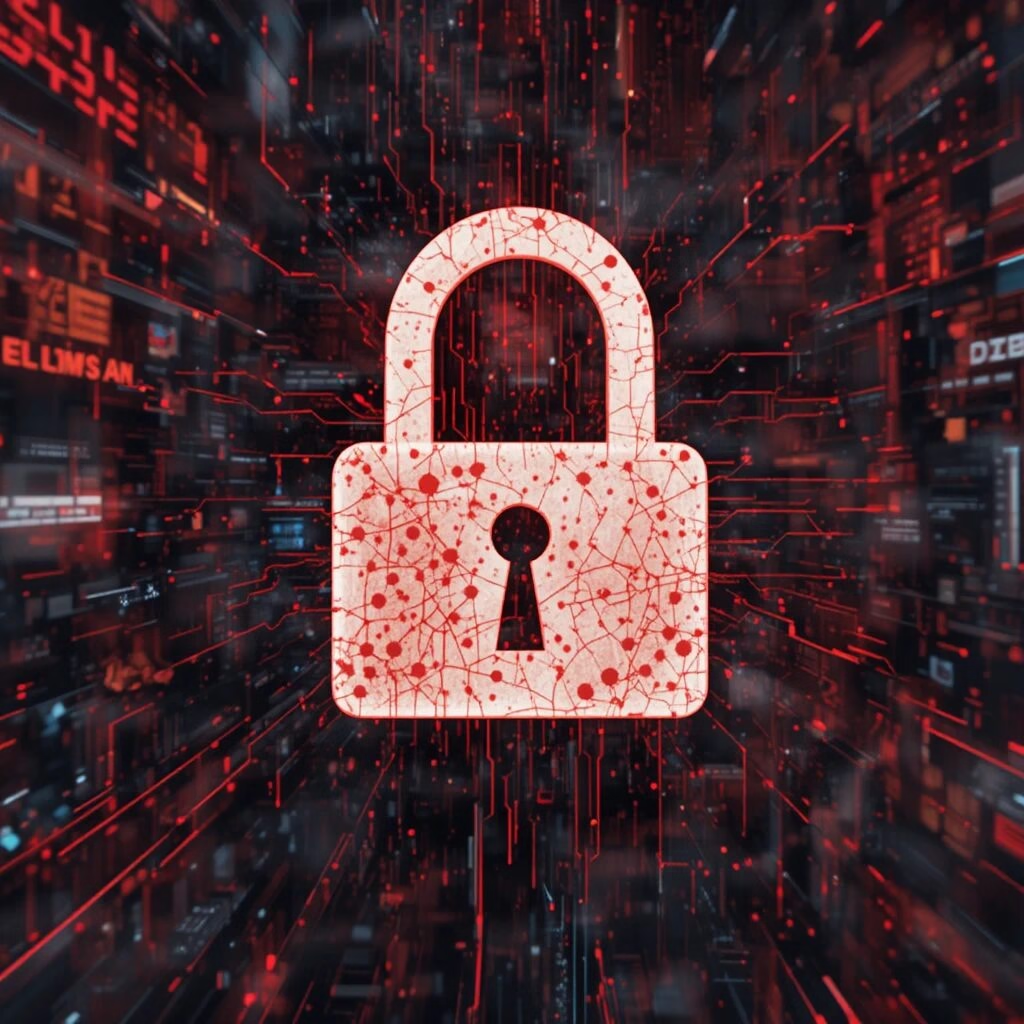Understanding Ransomware Attacks: Why Organizations are Targeted
Ransomware attacks have emerged as a critical threat to organizations across various sectors, driven by a multitude of motivations. One of the primary reasons organizations become targets is the inherent value of their data. Sensitive information, such as customer details, financial records, and intellectual property, often holds substantial worth in the cybercriminal marketplace. Attackers are well aware that the potential for profit incentivizes organizations to pay ransoms to regain access to their vital assets.
The characteristics of targeted organizations frequently align with specific vulnerabilities inherent to their industry. Industries such as healthcare, finance, and education are particularly susceptible due to the sensitive nature of the data they manage. For instance, healthcare providers maintain personal health information that, if compromised, could lead to significant repercussions for their patients and regulatory bodies. As a result, healthcare institutions often face pressure to prioritize ransomware negotiations to avoid public exposure and compliance issues.
Security gaps within an organization significantly contribute to its susceptibility to ransomware attacks. Cybercriminals increasingly employ sophisticated techniques to exploit weaknesses in security infrastructure, particularly in organizations that lack robust cybersecurity measures. Such weaknesses may include outdated software, insufficient employee training on recognizing phishing attempts, or inadequate incident response protocols. Consequently, organizations that do not adopt a proactive cybersecurity strategy become ripe targets for ransomware threats.
Moreover, the perceived ease of launching attacks further influences the selection of targets. Cybercriminals often analyze their potential victims based on factors such as cybersecurity maturity, previous incidents, and general technological resilience. Organizations known for lax security practices or those that have experienced attacks in the past may find themselves in the crosshairs of ransomware groups, as attackers view them as easier and more profitable targets.
The Lifecycle of Ransomware: What Happens to Stolen Data
Ransomware attacks have become increasingly sophisticated, involving a multi-step lifecycle that starts with the initial breach and extends to various extortion tactics. After the cybercriminal gains access to a network, typically through methods such as phishing or exploiting vulnerabilities, they proceed to encrypt critical data, rendering it inaccessible to the victim. This encryption serves dual purposes: it not only immobilizes the organization’s operations but also sets the stage for the extortion phase.
Once the data is encrypted, the attackers usually communicate with the victim, demanding a ransom payment in exchange for the decryption key. This communication often occurs through messages displayed on the victim’s screen, which include threats regarding the permanent loss of data or public exposure of sensitive information. The demand for payment is typically made in cryptocurrencies, providing a layer of anonymity for the aggressors.
In attempting to reclaim access to their stolen data, organizations face a dilemma. Paying the ransom does not guarantee that the attackers will actually restore the data or refrain from leaking it. Conversely, refusing to pay could lead to significant operational disruptions and unexpected financial losses, not to mention potential reputational damage. In some cases, attackers may engage in double-extortion tactics, threatening to publish sensitive data if the ransom is not paid, further complicating the victim’s decision-making process.
The consequences of ransomware extend beyond immediate operational issues. Even after a ransom is paid, organizations often must invest heavily in cybersecurity measures to prevent future attacks, as well as in compliance with data protection regulations. Furthermore, the risk of leaked data poses long-term implications, including legal repercussions and loss of customer trust. The 2025 Ransomware Report underscores the importance of understanding this lifecycle, enabling organizations to prepare and respond effectively to these pervasive cyber threats.
The Financial and Emotional Impact of Ransomware: Analyzing the Statistics
Ransomware attacks have seen a troubling surge over the past years, leading to a myriad of financial and emotional repercussions for the affected individuals and organizations. According to the 2025 Ransomware Report, ransom demands have escalated, with the average payment rising to over $400,000, a significant increase from previous years. This stark figure illustrates the extent of financial strain that businesses face when targeted by cybercriminals. Notably, organizations that choose to comply with these ransom demands often find themselves in a vicious cycle, as many become recurrent victims of subsequent attacks, driving up overall costs and economic instability.
The report also highlights a concerning trend in payment behaviors. Approximately 70% of the firms that faced ransomware attacks opted to pay the ransom, yet only 60% of those regained access to their data. The disparity underscores the unreliable nature of cybercriminal promises, leaving companies in jeopardy regardless of their payment decisions. Additionally, the total economic toll of ransomware extends beyond direct payments. Companies experience prolonged downtime, lost revenue, regulatory penalties, and diminished customer trust, cumulatively amounting to an estimated $20 billion impact annually on the global economy.
Furthermore, the emotional and psychological ramifications of ransomware attacks on individuals and teams are profound yet often overlooked. Cybersecurity professionals working under constant threat endure significant stress, anxiety, and burnout, as they grapple with the responsibility of averting attacks and managing breaches. Individuals affected by ransomware breaches frequently experience a loss of trust in technology, leading to feelings of violation and vulnerability. The human element, including emotional distress and job-related anxiety, is an essential consideration in understanding the complete impact of ransomware incidents.
Proactive Measures: Improving Defense Against Ransomware
Organizations aiming to fortify their defenses against ransomware must adopt a multifaceted approach that encompasses cybersecurity strategies, incident response planning, and employee training. By integrating comprehensive insights from the 2025 Ransomware Report, businesses can effectively enhance their overall security posture.
First and foremost, it is crucial for organizations to conduct a thorough assessment of their current cybersecurity measures. This involves identifying potential vulnerabilities in their systems and network infrastructures. Regularly updating software and operating systems is essential, as outdated applications can serve as gateways for ransomware attacks. Employing reliable antivirus and anti-malware tools can also bolster defenses by detecting and neutralizing threats before they manifest into significant issues.
In addition to technological upgrades, developing a robust incident response plan is vital. This plan should outline clear procedures for detecting, analyzing, and responding to ransomware incidents. Organizations should designate a response team responsible for implementing the plan and ensuring coordination across departments. Conducting regular drills can prepare employees for actual incidents, thereby minimizing panic and confusion during a real attack.
Furthermore, fostering a culture of security awareness among employees cannot be overlooked. Regular training sessions focused on recognizing phishing attempts, understanding safe internet practices, and the significance of strong password policies can empower staff members to serve as the first line of defense. Organizations should promote open communication where employees feel comfortable reporting suspicious activities without fear of reprisal.
Ultimately, enhancing defenses against ransomware requires a proactive mindset that combines technological advancements with human awareness. When organizations invest in both systems and their teams, they significantly elevate their resilience to cyber threats, ensuring better protection of sensitive data and operational continuity.




